Do You Really Know When You’re Doing Maths? In Celebration of Maths Week 2024
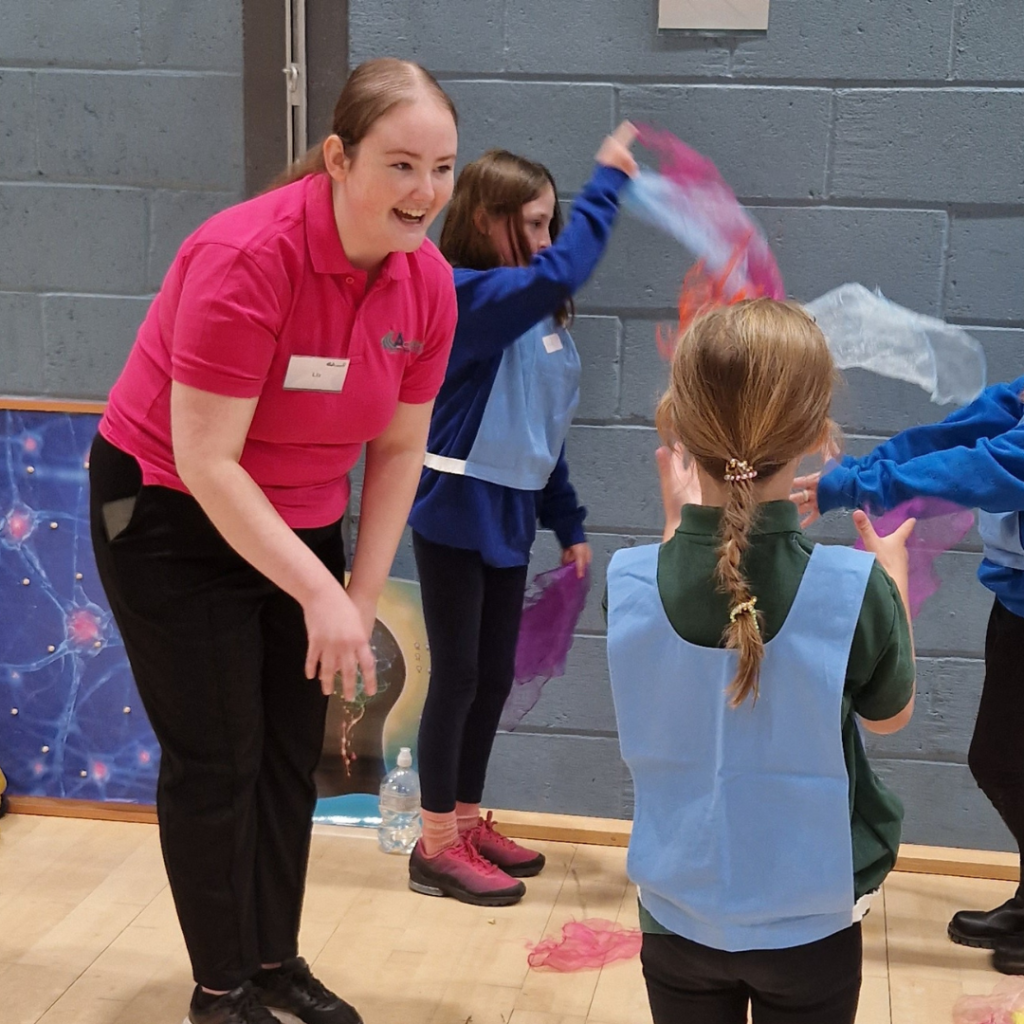
Have you ever wondered just how much math and numeracy you use every single day? From counting your steps to school, to measuring ingredients for a yummy recipe, or even figuring out how much time you have left to play before bedtime—math is everywhere!
Our recent Gateway events at Grantown Grammar and Kingussie High Schools also included lots of hidden maths for the primary 5 pupils who attended from the feeder primary schools.
We wanted to take a look at all the team challenges completed on the day and see how we used our maths and numeracy skills in ways we maybe didn’t even realise.
Are you ready to become a math detective with us? Let’s go!
There’s also some mini maths challenge questions at the end for you to try…
Challenge 1 – Traffic Senses
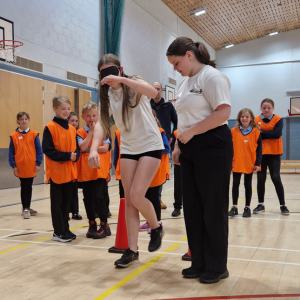
Did you know that your eyes and brain are constantly working together to do hidden maths for you? It’s how you know how high you need to lift your leg to climb up a step, or which direction to walk in so you don’t bump into things.
Navigation involves lots of maths; distance, angles, speed and volume of shapes.
We use our vision to help us do most of this maths without even realising it, and if we lose that sense it makes doing these aspects of hidden maths more challenging.
In the Traffic Senses challenge we give our brains the challenge of navigating through a path of cones without our sense of vision. How do we do the maths without this sense? We rely on our other senses.
Our senses of hearing and touch are the most useful in helping us navigate without our vision, and our clever brain taps into these senses to help us do the maths instead. By listening to your friends’ instructions and feeling for when an obstacle is near, you are able to create your path through the course.
Successfully navigating through the course will require clear communication. Information on how many steps you need to take and what direction you need to travel in will be extremely useful. With lots of ways to indicate direction we could use words like; forwards and backwards, left and right or north and south. Using angles to add extra information, we can give useful instructions such as, “turn 90 degrees left” or “turn 90 degrees anti-clockwise.”
Challenge 2 – Safety First
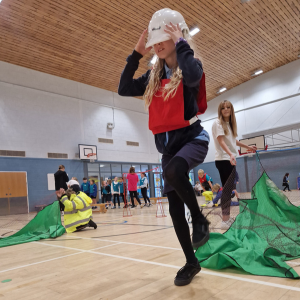
Did you know you wear Personal Protective Equipment (PPE) every day? Making sure you wear a helmet when cycling your bike, using oven gloves when taking baking out of the oven and wearing wellington boots when it is raining are all forms of protective equipment. It is very important to protect yourself and keep everyone safe.
When working on the A9 Dualling project, our professionals wear PPE to make them more visible and protect them from potential harm.
Numeracy and maths is very important in Health and Safety and we use numbers to give a quick and clear insight into how ‘risky’ something might be.
On the A9 Dualling project, every activity is assessed and given a numerical ‘risk rating’. Risk rating for activities is calculated by multiplying the numerical likelihood something will happen by the numerical number given to illustrate how serious the injury might be if that thing does happen. We usually use numbers from 1 to 10. With 1 being very low risk/unlikely and 10 being very high risk/likely to happen. This allows us to more easily decide if an activity is safe enough to carry out, or if we need to put extra measures in place first to reduce the risk score.
PPE also doesn’t last forever, and hard hats have expiry dates just like food. We use number dates to help us know if the PPE is still able to keep us safe. A hard hat may only last 5 years before it needs to be replaced, because the plastic loses strength as it ages and might not protect our head from any bashes any longer.
Challenge 3 – Load the Lorry
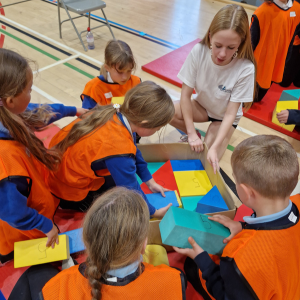
How many shapes can you identify? Shapes are all around us and being able to identify shapes will help you solve problems and become more creative. Next time you are out a walk see how many shapes you can identify; from the shapes of leaves, to buildings you pass, and items in your home. Shapes are everywhere.
This challenge involves working as a team to fit as many shapes as you can into a box.
By analysing the shape and its size and volume you can work out where to place each shape to ensure they all fit. Thinking about which shapes have sides that link together and rotating the shapes can really help you get more shapes in the box and in the correct position.
One of the main uses of the A9 road is transportation of goods to the Highlands, like food and furniture – all needing to be taken to sell in various shops. Being aware of shape and volume is very important when transporting goods, as we don’t want to waste the space available in the lorries. We want to fit in as much food or furniture as possible so we have plenty of nice food in our shops and don’t have to make more unnecessary trips transporting bulky furniture.
Challenge 4 – Our Environment
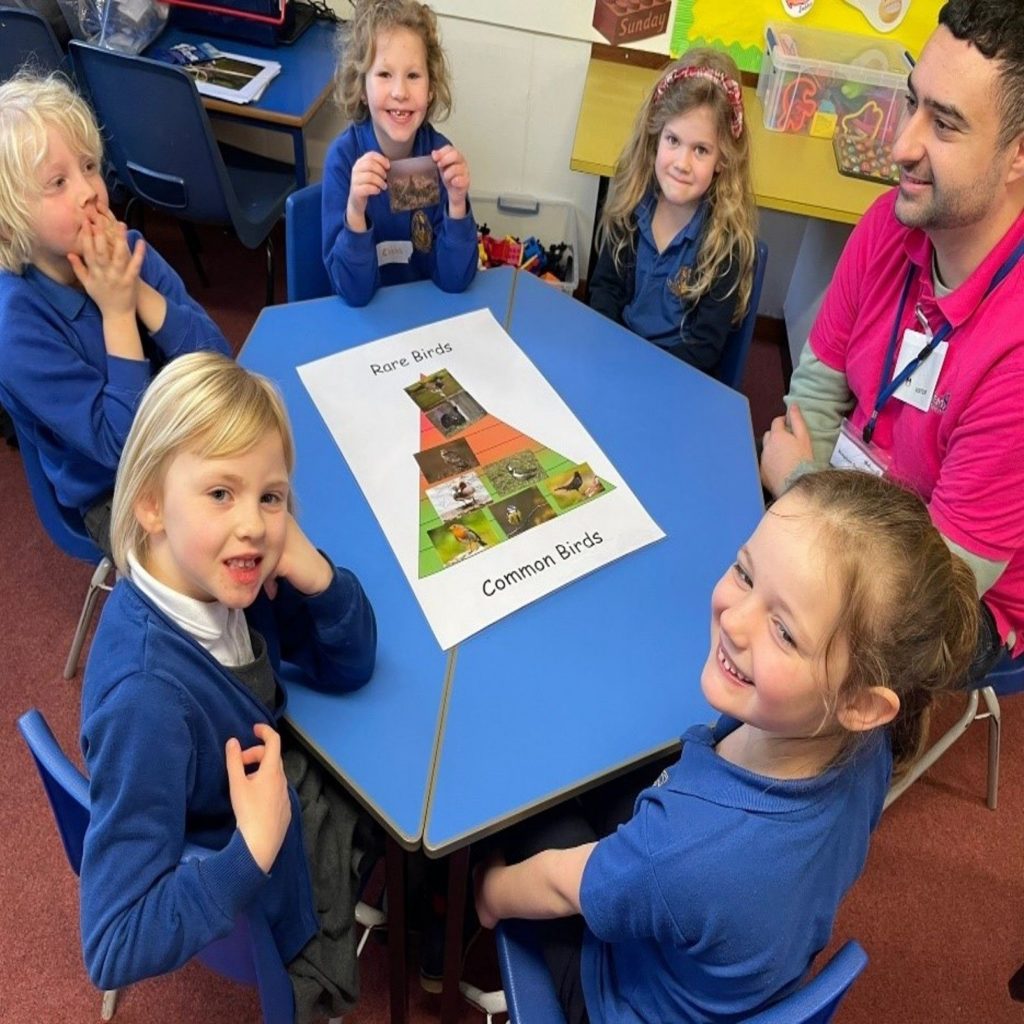
Could you explain the difference between a common and a rare bird? Common means that there would be a large number of that bird and rare means that there would be a very small number. Being able to identify the species and count how many you see is a very important responsibility. Our ecologists do this regularly when carrying out wildlife surveys. There are lots of different ways that you can keep track of your counting, and that might be with a tally sheet, a step counter, or using maths sums.
Challenge 5 – Team Travel
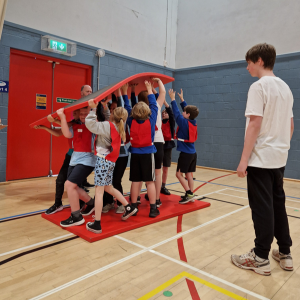
How quickly can you safely travel from one place to another? Ensuring that we can all travel to our destination safely is our main goal and to do that we need to look out for everyone around us. Being aware of other active travellers; such as cars, bikes, pedestrians and animals is so important. The next time you are out and about, why don’t you count how many different types of transport users you can spot?
Team Travel involves the consideration of distance and area. You only have one small area to stand on as a team, so how are you all going to fit in that area?
The distance you have to travel is not able to be covered by the length of your mats. So how would you work as a team to make best use of the mats you have and cover the distance safely and efficiently? No one likes a long journey, so the quicker the better. However, if someone falls off the mat along the way then there will be penalties.
Whether you realise it or not, this all involves our knowledge of distance and area.
Challenge 6 – Mindset
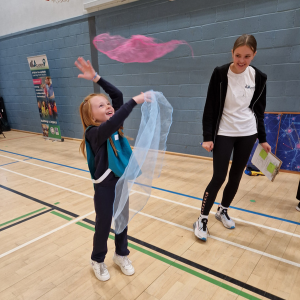
Have you ever started to do a maths test and felt your tummy churning and heart beating faster? There’s a ringing sound in your head and you just can’t make any sense of the questions no matter how many times you read them. To make things worse everyone else seems to be writing away without a care in the world.
First of all, you’re not alone. Lots of people feel this kind of stress and anxiety around maths. Sometimes it can just be on the day of a test, but for others worrying about a maths lesson or test can take up your whole world.
You might feel a sense of shame or embarrassment if you are not doing as well as others, and this can only make the anxiety worse. It is important to remember that if you are struggling with maths this does not mean that you are stupid. Without a doubt there are other subjects or activities you are great at; it might just be that maths is not your strongest one and this can have a real impact on your confidence and overall happiness.
Here are some simple steps to follow to begin your growth mindset journey:
- This may be easier said than done but try and not be so hard on yourself. A key step is reducing your worry and anxiety about maths. Talk to someone about how you are feeling and try and work out what support you can get.
- Reframe mistakes and failures to something more positive. Focus on the times you got it right and find opportunities to learn from any incorrect answers.
- It’s easy to avoid maths homework, especially if it makes you feel bad! But giving yourself some time to work through it can really help. Try breaking it into smaller bitesize chunks.
- Use the power of YET! Don’t give up. You might not have the answer YET, but believe that with some time and effort you will achieve it.
- Be fierce! Don’t be afraid of asking for help when you need it. Believe in yourself and be proud of your effort. This is your learning journey, so try not to compare yourself to others.
Why not try out your growth mindset now with our maths quiz below?







